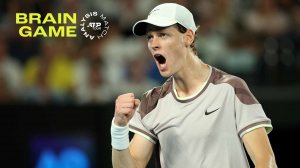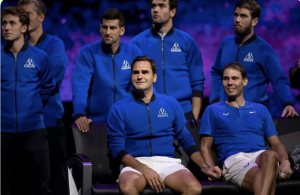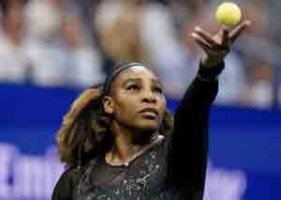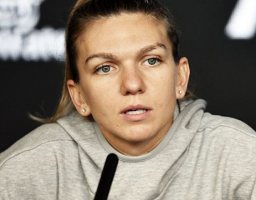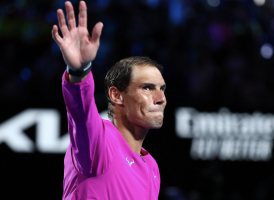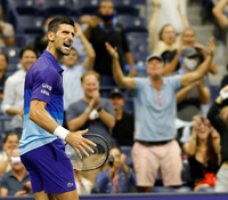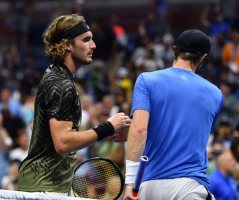Murray: Breaks can’t be this long
Andy Murray said he dreaded having to do a press conference after his 2-6, 7-6 (7), 3-6, 6-3, 6-4 loss to Stefanos Tsitsipas at the US Open on Monday. He didn’t dread it because it had been a painful defeat, in four hours and 48 minutes, to the No. 3 seed, in a match he might have won if another point or two had gone his way. No, Murray dreaded doing his presser because he wouldn’t be able to spend much time discussing the match, or his own, often-excellent performance, or the brilliance of his young opponent.“Rather than talking about how fantastic he is, how good he is for the game, how great it was for me that I was able to put on a performance like that after everything that’s gone on the last four years,” Murray said, “I’m sitting in here talking about bathroom breaks and medical timeouts and delays in matches. That’s rubbish.“I said to Nicola [Arzani, of the ATP], I don’t want to do press tonight because I know I'm going to sit here and it’s going to seem like I’m just smashing him.”But Murray did sit there, and he did smash him. He accused Tsitsipas of gamesmanship, of deliberately disrupting his rhythm with between-set bathroom breaks, with a medical timeout, with a change of racquet at a critical juncture, with a sneaker change at another juncture. The final straw was the eight-minute break that Tsitsipas took after the fourth set to change his clothes, and which sent Murray into a tirade that lasted, off and on, for the rest of the match.“It’s not so much leaving the court, it’s the amount of time,” Murray said. “When you're playing a brutal match like that, you know, stopping for seven, eight minutes, you do cool down.”Murray went on to say that something needs to be done to “make it less easy for the rules to be exploited.” For instance, if you take a medical timeout, you forfeit the next game. Or, you give everyone a single, five-minute break per match, and that’s it.“I sit on the player council, and we speak about it all the time,” he said.Murray is right, the between-set break and the MTO have become scourges in tennis. Players obviously need to use the bathroom sometimes, and it’s easy to see why they would want to change clothes on a humid day like today. But for fans, the delays grind the action to a halt; for opponents, they can unfairly break their momentum, and the natural rhythm of a match. It isn’t just Tsitsipas, of course; plenty of other top players, old and young, take strategic breaks. But Tsitsipas’ reputation in this regard preceded him, and likely contributed to Murray’s rage.“I spoke to my team before the match about it and said to expect that, prepare for it if things were not going his way. So I was trying to do that,” he said.As for Tsitsipas, he said his actions were within the ATP’s guidelines.“As far as I know,” he said, “you’re allowed to have two toilet breaks to go change your clothes in a five-setter, and one in a three-setter. I followed that throughout my entire career. I’ve never broken any rules, so I see no reason that that’s a problem anyways.”Anything that can be done to make bathroom breaks less frequent, I’m for it. Short of that, if there’s a way to give the player stuck on court a chance to rally and stay warm, I’m for that, too.As Murray said, it’s a shame that the primary topic of conversation afterward wasn’t the quality of the contest itself. If it had taken place in the final or semifinal of a major, we’d be talking about it as a Top 5 match of the year. In a sense, each player came away a winner.For the first time since his comeback from his latest hip surgery, the 34-year-old Murray showed that he can compete with an elite opponent. He was broken just three times over five sets. He attacked and defended at the same level as Tsitsipas. He brought back some of his golden oldies, like his blistering crosscourt forehand and topspin backhand lob. He was 26 of 35 at the net. And he stayed with his younger opponent physically until the final shot. Perhaps Murray’s only slip was the routine backhand he netted at 6-4 in the second-set tiebreaker, which would have put him up two sets to love.“I’ve said it a lot over this last few months, that I know I’m capable of playing that tennis,” Murray said. “I guess tonight I proved some things to a certain extent.“Overall I did well tonight, but I’m really, really disappointed, really disappointed after that, frustrated, all those things. Really disappointed.”From Tsitsipas’ perspective, he showed that he can take a quality opponent’s best punches and come back with something even stronger. The most impressive moment from him came in the first game of the fifth set. Murray was serving, and revving up the crowd against Tsitsipas. Instead, it only served to rev up Tsitsipas, who raised the pace of his ground strokes, broke serve, and held out the rest of the way for the win. Tsitsipas found a level Murray couldn’t rise to.“There came a moment when I had my second break of the set, I think it was in the fourth set, where I really started feeling my confidence raising, feeling much more free on court,” said Tsitsipas, who plays Adrian Mannarino next. “That was the moment. That was also the indication that I have what it takes to overcome this obstacle today.”Tsitsipas said he and Murray will have to “chat” about what happened on Monday. Whatever they decide, and whatever the rest of the tennis world decides, it was a heckuva five-hour way to welcome fans back to the US Open.By Steve Tignor
Source: tennis.com







